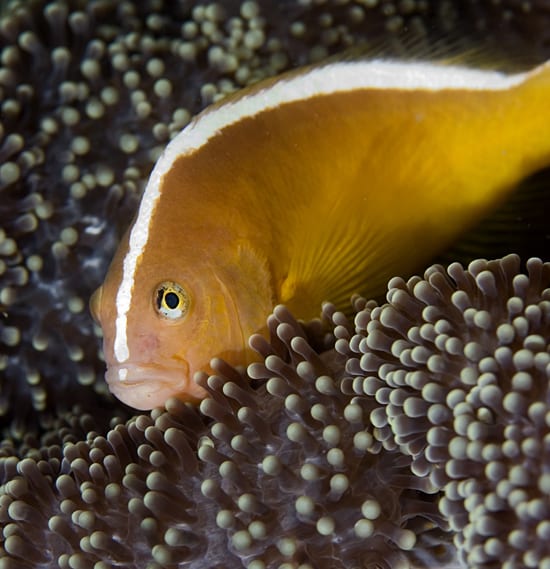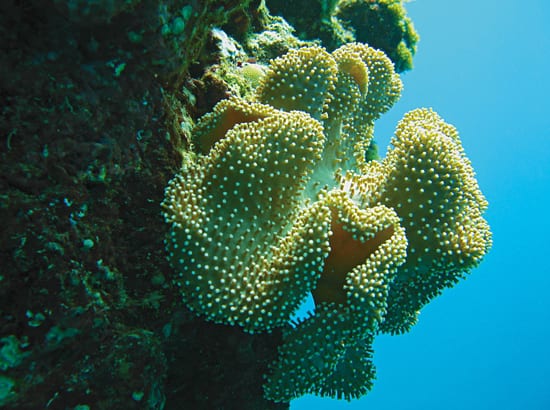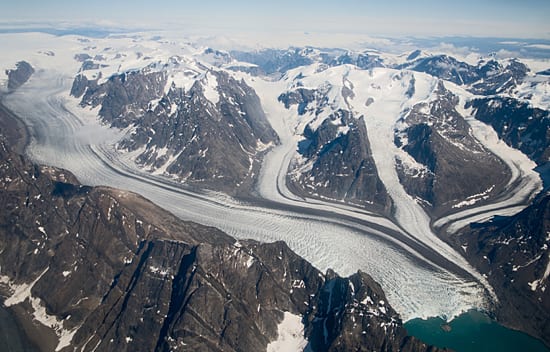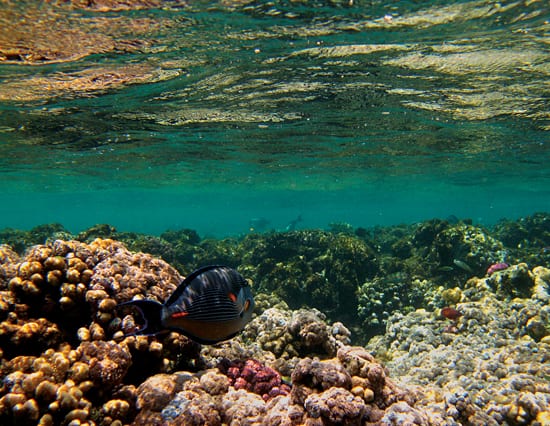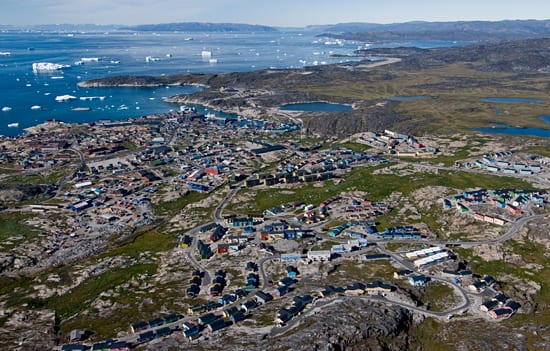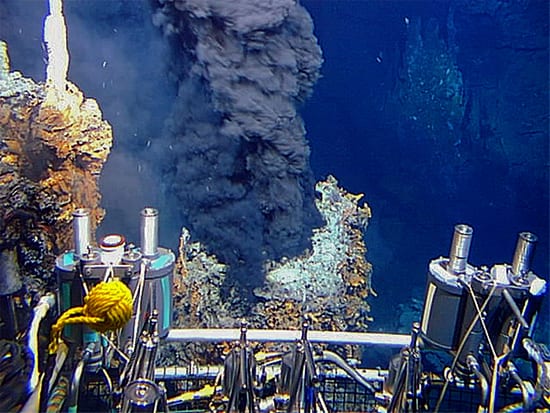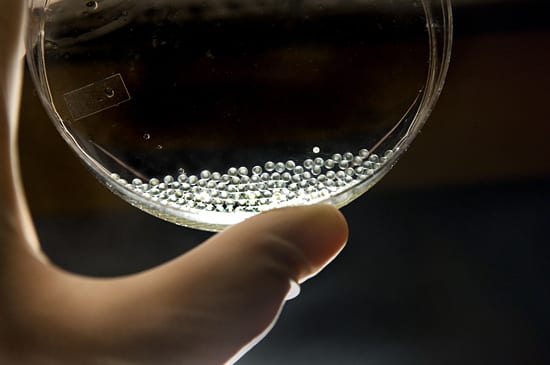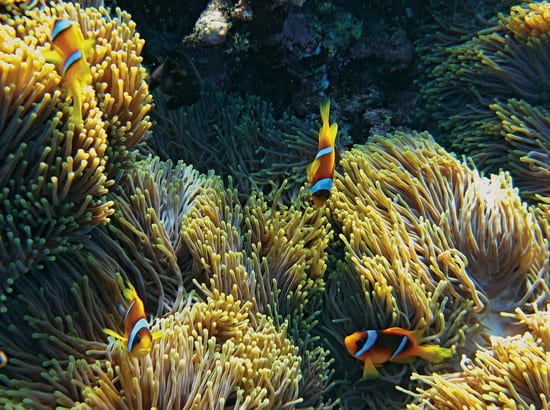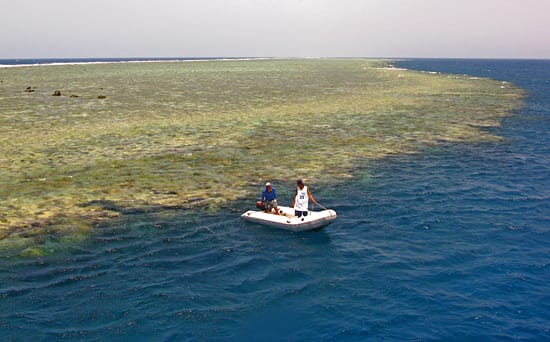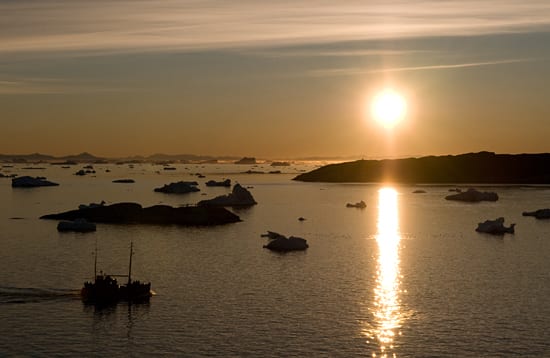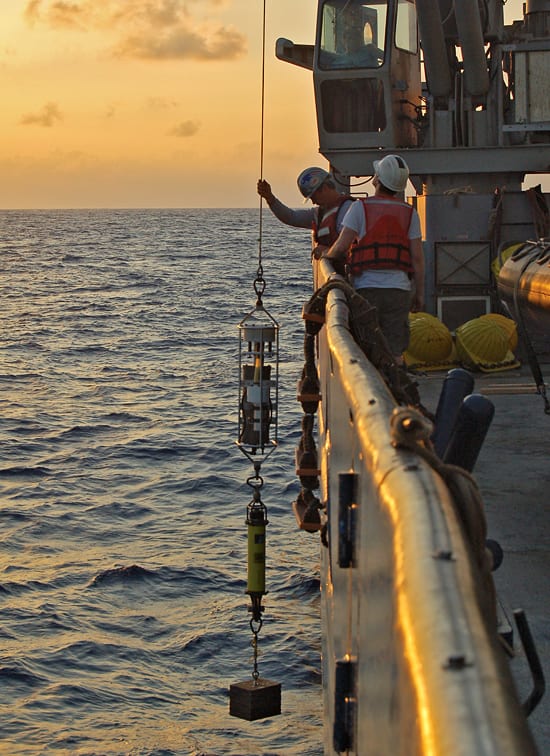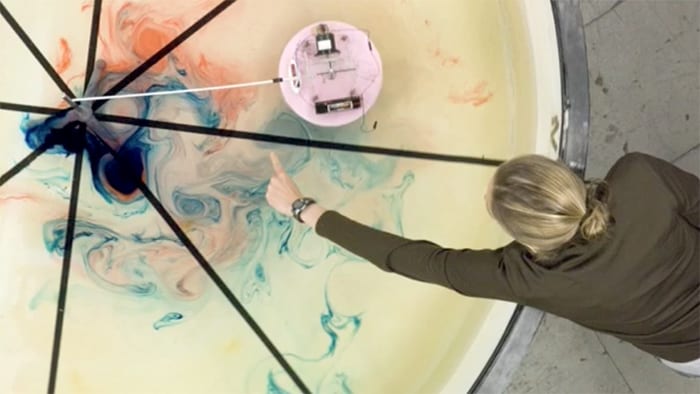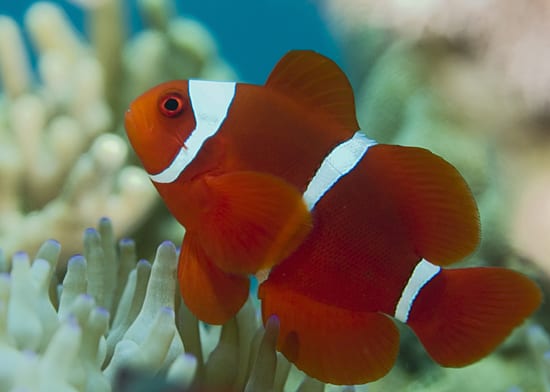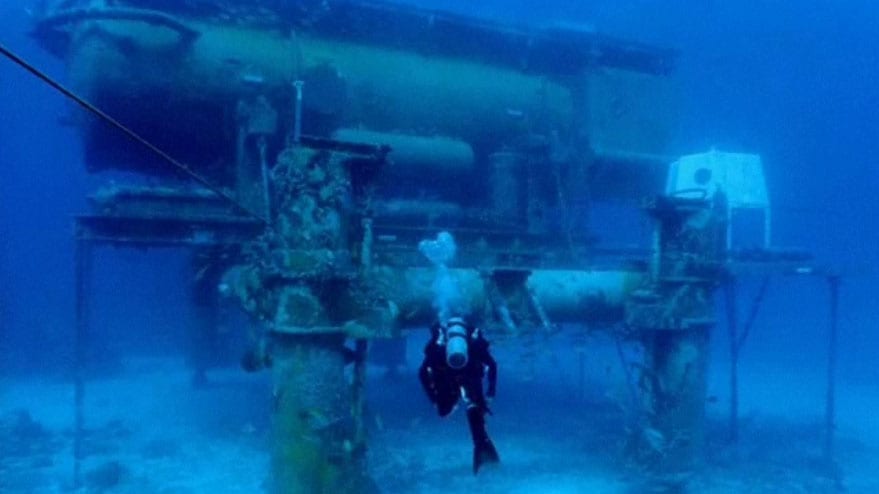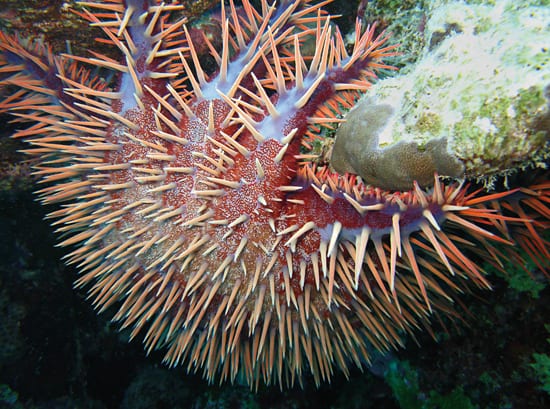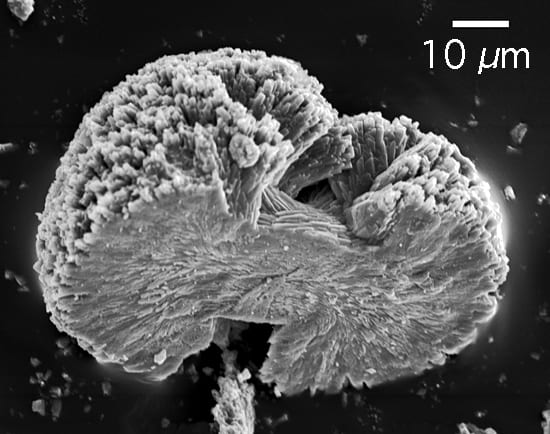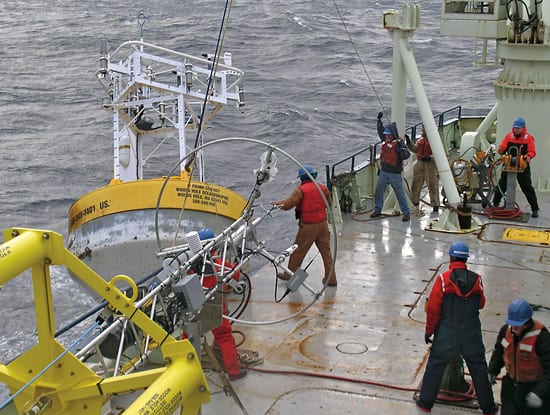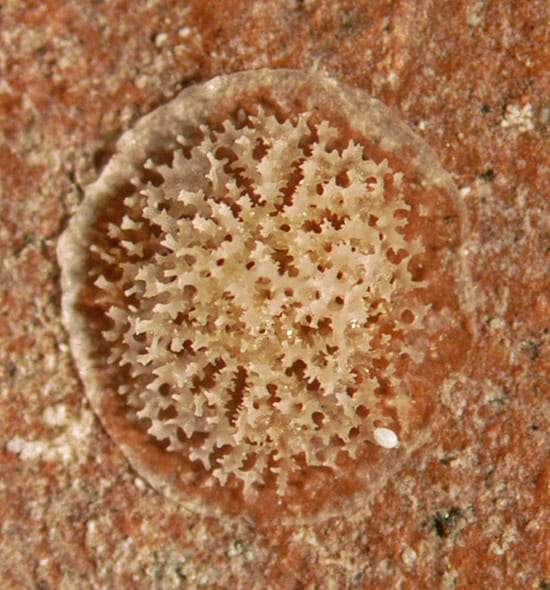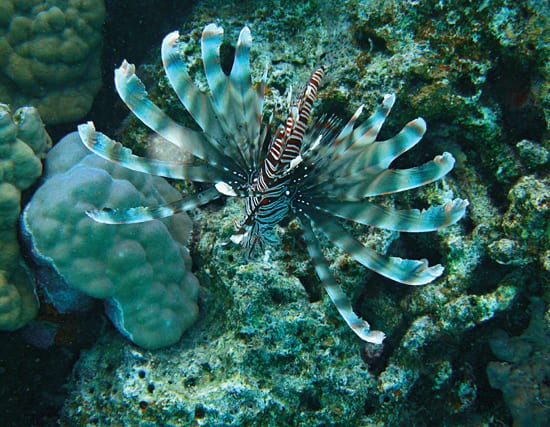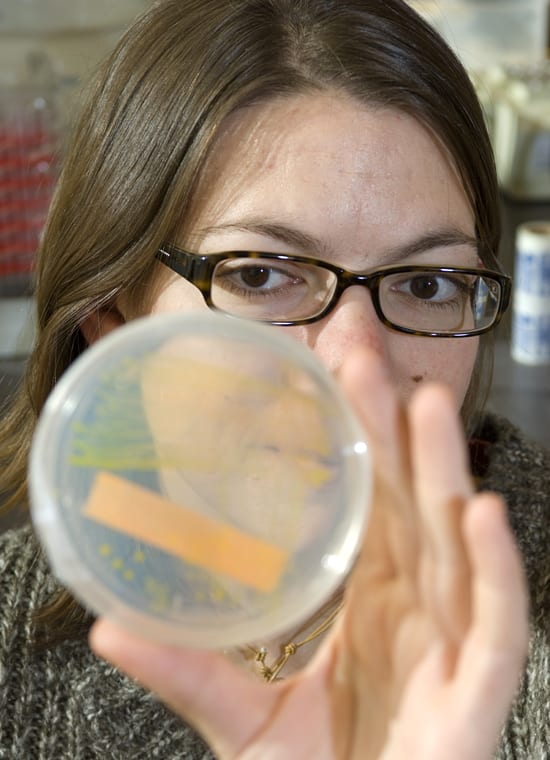Multimedia Items
Linking the Indian Ocean and monsoons
Surface temperatures in the Indian Ocean naturally oscillate, a phenomenon called the Indian Ocean Dipole. During its positive phase, warmer waters in the western Indian Ocean bring heavy rains to…
Read MoreTracking reef fish
An orange anemonefish (Amphiprion sandaracinos) hides among sea anemones at a reef off Restoff Island in Kimbe Bay, Papua New Guinea. In April 2005, WHOI biologist Simon Thorrold and colleagues…
Read MoreHanging on
At the edge of a coral reef in the Red Sea, an isolated leather coral clings to a rocky outcrop. It’s individual polyps, tightly curled in the photo, open up…
Read MoreIsland view
Researchers who camped and worked on Greenland’s ice sheet this summer soaked in their initial glimpses of the huge Arctic island. “As western Greenland came into view, first-time visitors like myself glued…
Read MoreThe top of the reef
Coral reefs often extend from a sandy bottom to just beneath the water’s surface, forming broad reef flats. Barely a foot below the surface, the flats can be a harsh…
Read MoreTakuss, Greenland
Researchers who spent weeks in Greenland camping and working on the ice sheet said a final takuss (Greenlandic for see you) to Disko Bay, located in the coastal town Ilulissat. Photographer Chris…
Read MoreHot fluid on a cold seafloor
Researchers inside the submersible Alvin watch a black smoker chimney erupt from seafloor vents. Hot hydrothermal fluids surge through the chimneys at velocities of 1 to 5 meters per second.…
Read MoreYippee!
James Brennan II spread the good news last summer after requalifying to become an Alvin “swimmer,” or person who enters the water to assist with the launch and recovery of…
Read MoreFish dish
Summer student Lauren Watka from the University of Massachusetts, Dartmouth holds a petri dish of fish eggs from mummichogs, Fundulus heteroclitus. Working with post-doctoral fellow Matthew Jenny in WHOI biologist…
Read MoreChangeable clowns
Clownfish, or anemonefish (now commonly referred to as “Nemos,”) swim through what looks like waving wheat—actually the tentacles of their massive sea anemone home, moving with the water’s surge. A…
Read MoreReef’s edge
An inflatable boat and dive-tour operators stand by at a coral reef’s edge in the Red Sea, where WHOI scientists are studying the unique, pristine reef ecosystems along Saudi Arabia’s…
Read MoreProfiling below the ice
WHOI engineering assistant Kris Newhall (left) and crewmember of the Canadian icebreaker Louis V. St. Laurent Brian Mackenzie (middle) prepare to assist WHOI research specialist Rick Krishfield in deploying an…
Read MoreArctic summer night
Midnight in Greenland, in the summer, means the sun still shines. “For recent arrivals, the round-the-clock daylight streaming in the hotel windows have wreaked havoc on our internal clocks,” wrote…
Read MoreNew faces at old places
Small mushroom-shaped coral colonies are young recruits that have settled on a large dead coral in the Red Sea. Juvenile corals are continually colonizing hard substrates, including ancient colonies that…
Read MoreMooring away
In November 2007, R/V Atlantis Bosun Patrick Hennessy (left) and MIT/WHOI Joint Program graduate Benjamin Walther deploy a pump mooring during the LADDER III (LArval Dispersal on the Deep East…
Read MoreWhat Makes the Great Ocean Currents Flow?
By Ari Daniel :: Originally published online December 23, 2008
Read MoreTracking reef fish larvae
A spine-cheek anemonefish (Premnas biaculeatus), or maroon clownfish, swims along a coral reef in Kimbe Bay, Papua New Guinea. As part of an international collaboration, WHOI biologist Simon Thorrold and…
Read MoreA Deep-sea Chemical Sniffing Bloodhound
Mass spectrometers are often big and delicate instruments that require their own environmentally controlled rooms. WHOI engineer Rich Camilli developed one that scientists can bring into the depths to sensitively…
Read MoreSlow motion destruction
Gliding on hundreds of tiny suction-cup feet, A Crown-of-thorns sea star roams the reef, consuming immobile corals and leaving bare coral skeleton behind. Common in the Pacific and Indian Oceans…
Read MoreExperimental crystals
Crystals of aragonite, a form of calcium carbonate, grew together in a “bowtie” bundle—a classic mineral crystal growth pattern—when grown in the laboratory under controlled experimental conditions. This experiment is…
Read MoreBuoys hunting for data
Researchers and crew on the research vessel Knorr prepare to recover a meteorological buoy that had broken loose in February 2007. They were in transit to the fourth of six…
Read MoreChristmas Coral
New skeleton made by a two-week old baby Porites “porous” coral reared in an experimental aquarium at the Bermuda Institute for Ocean Sciences looks like a miniature Christmas tree. The…
Read MoreA warning
A lionfish spreads out distinctively-patterned fins around its body and shows its zebra stripes. Such striking beauty hides a deadly secret: the lionfish has venomous spines hidden among the dorsal…
Read MoreBacterial conversations
Holding up a culture plate, Joint Program student Laura Hmelo checks the growth of bacterial colonies. Hmelo is studying a phenomenon called bacterial “quorum sensing”— how marine bacteria found in…
Read More

